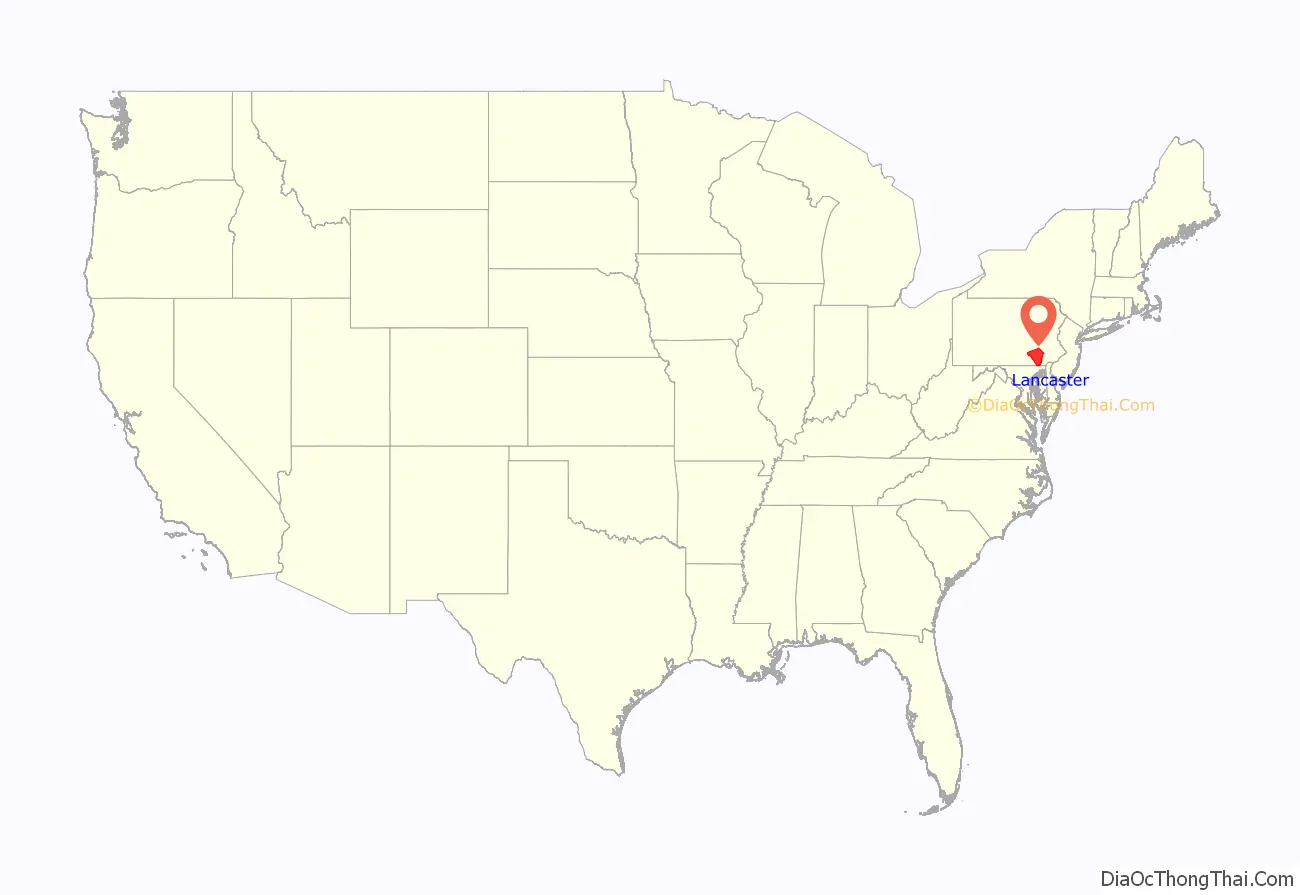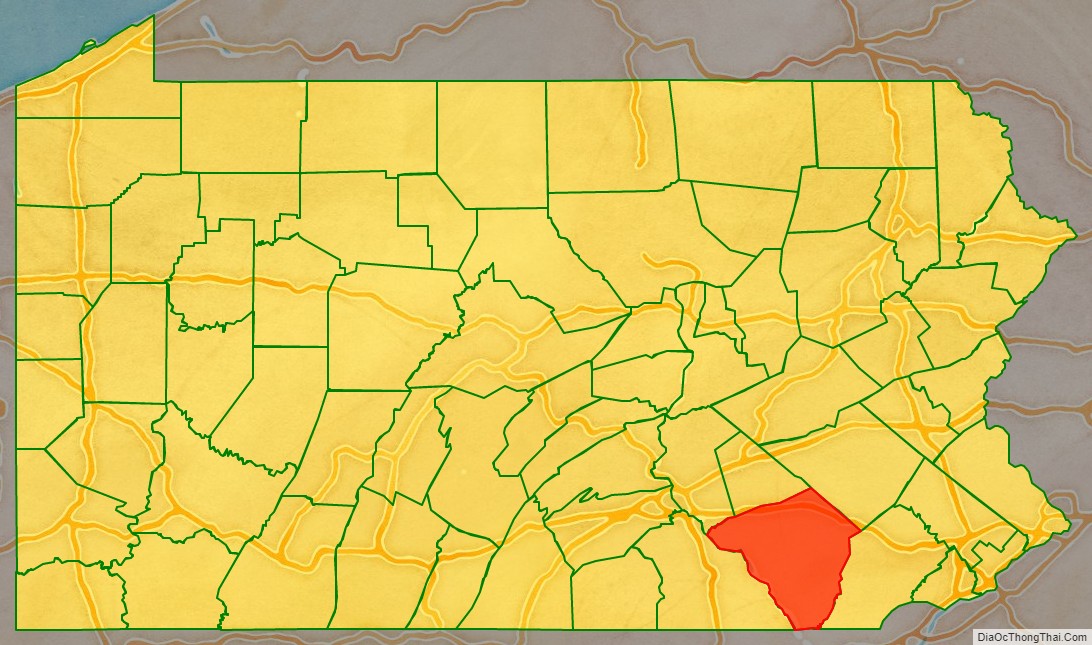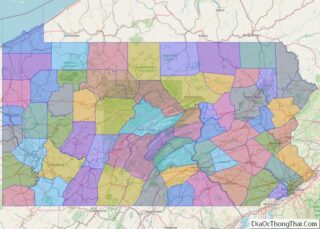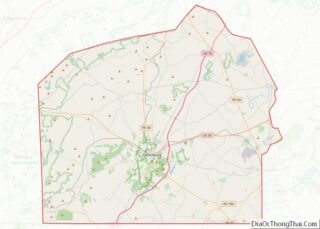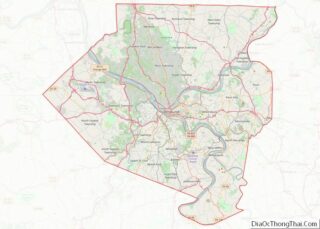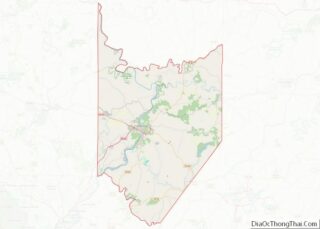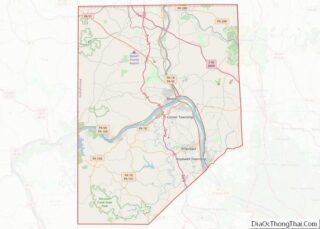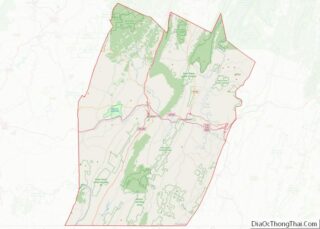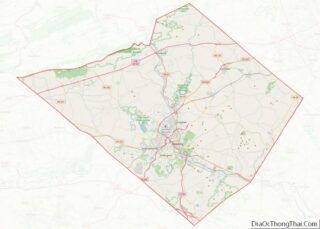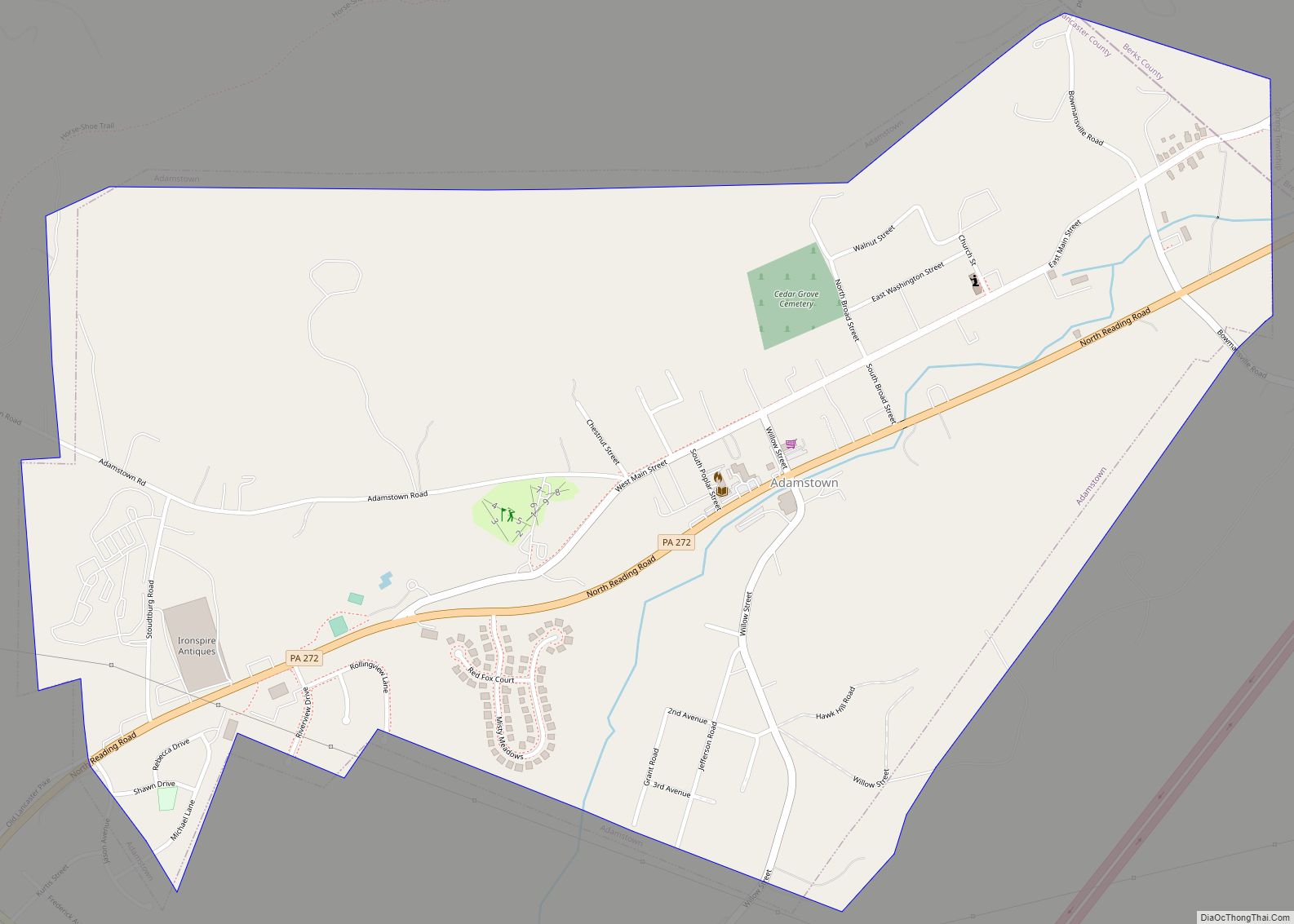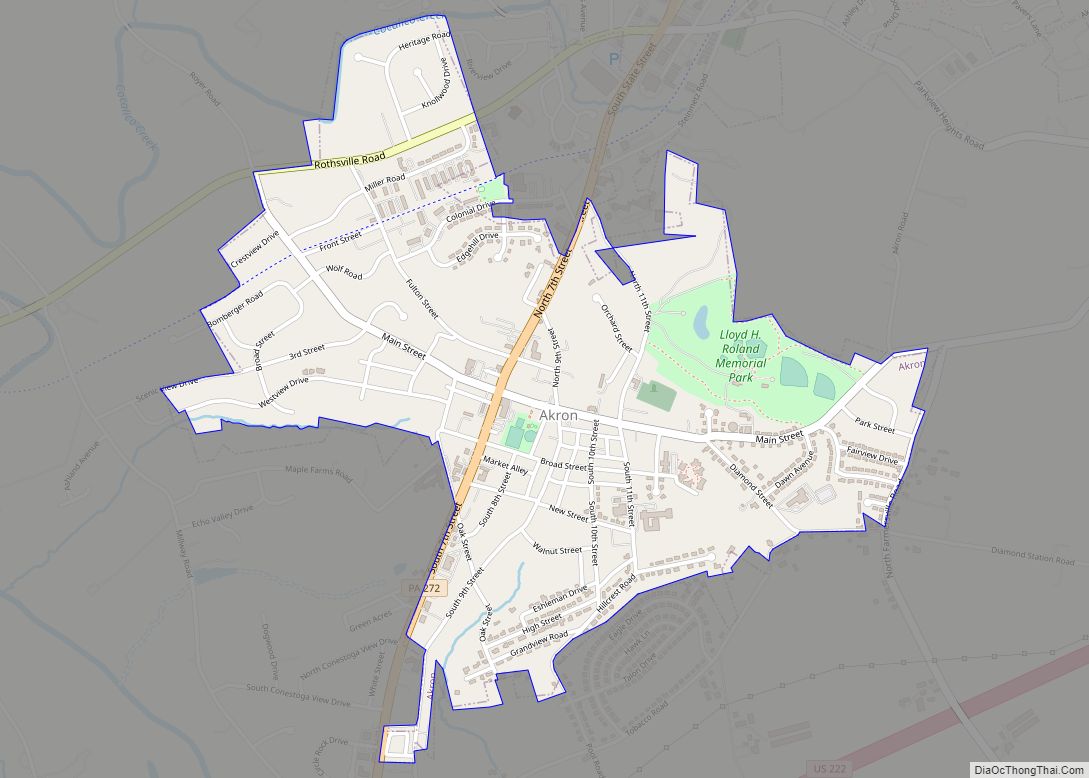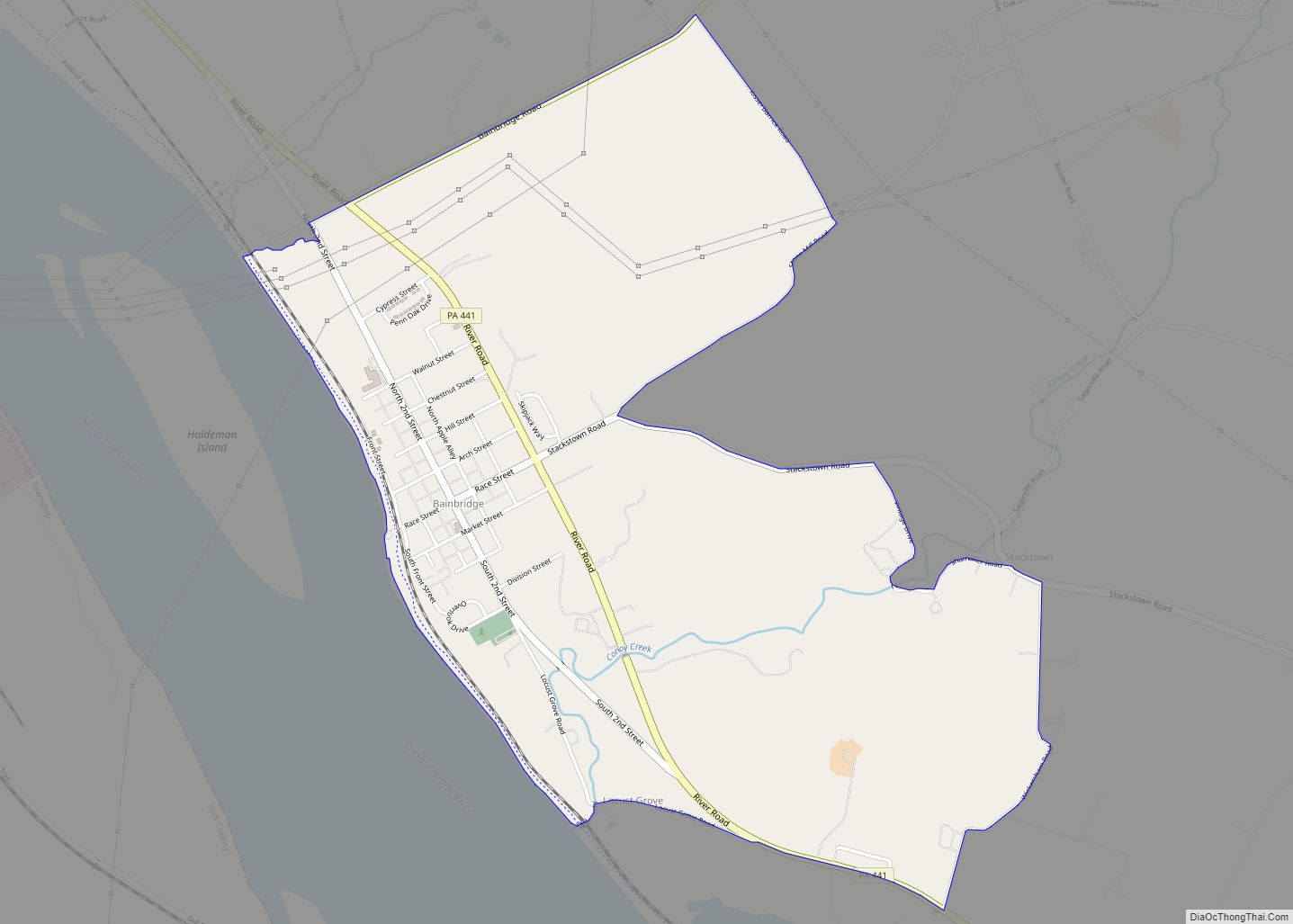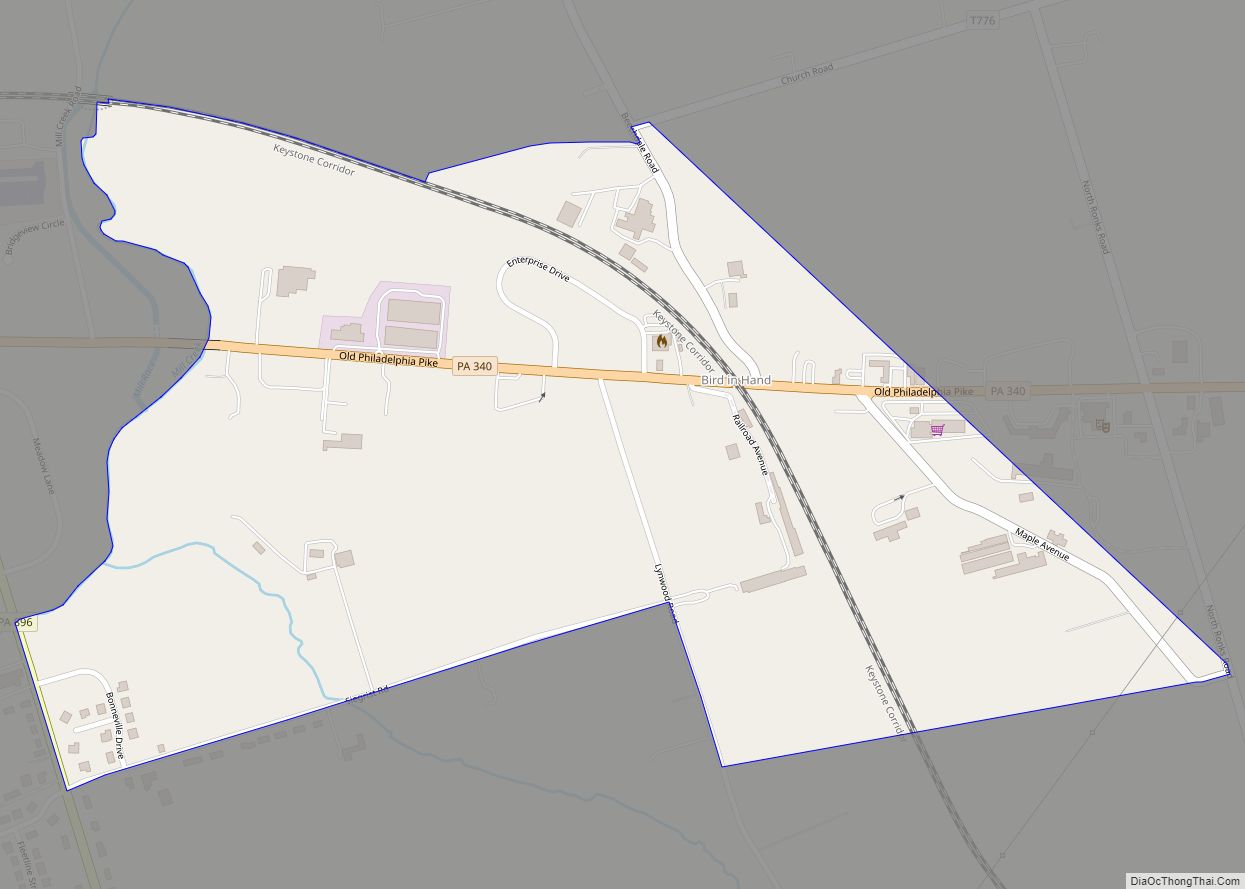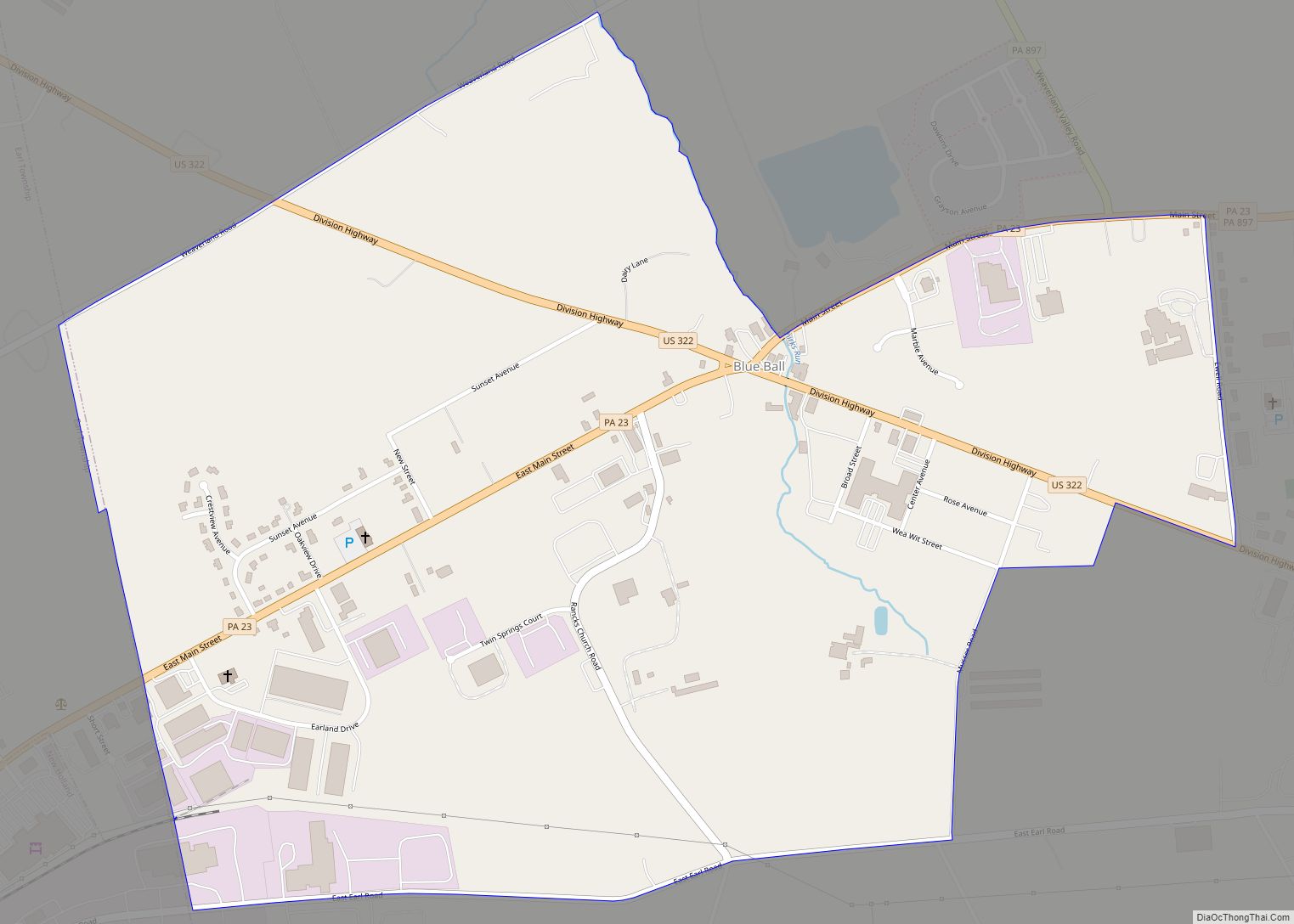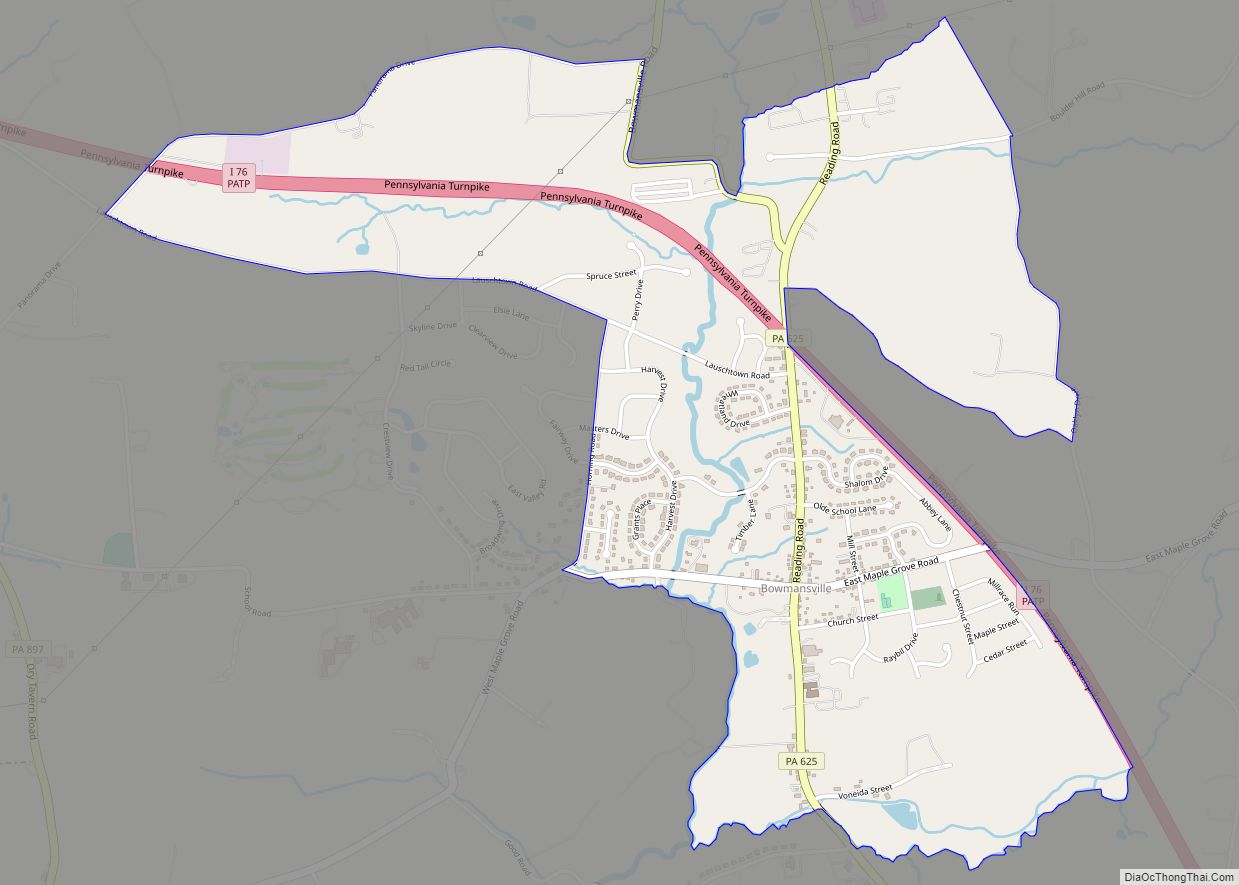Lancaster County (/ˈlæŋkɪstər/; Pennsylvania Dutch: Lengeschder Kaundi), sometimes nicknamed the Garden Spot of America or Pennsylvania Dutch Country, is a county in the Commonwealth of Pennsylvania. It is located in the south central part of Pennsylvania. As of the 2020 census, the population was 552,984. Its county seat is Lancaster. Lancaster County comprises the Lancaster, Pennsylvania metropolitan statistical area.
Lancaster County is a tourist destination with its Amish community a major attraction. Contrary to popular belief, the word “Dutch” in “Pennsylvania Dutch” is not a mistranslation, but rather a corruption of the Pennsylvania German endonym Deitsch, which means “Pennsylvania Dutch / German” or “German”. Ultimately, the terms Deitsch, Dutch, Diets, and Deutsch are all cognates of the Proto-Germanic word *þiudiskaz meaning “popular” or “of the people”. The continued use of “Dutch” instead of “German” was strengthened by the Pennsylvania Dutch in the 19th century as a way of distinguishing themselves from later (post 1830) waves of German immigrants to the United States, with the Pennsylvania Dutch referring to themselves as Deitsche and to Germans as Deitschlenner (literally “Germany-ers”, compare Deutschland-er) whom they saw as a related but distinct group.
The ancestors of the Amish began to immigrate to colonial Pennsylvania in the early 18th century to take advantage of the religious freedom offered by William Penn. They were also attracted by the area’s rich soil and mild climate. Also attracted to promises of religious freedom, French Huguenots fleeing religious persecution settled this area in 1710. There were also significant numbers of English, Welsh and Ulster Scots (also known as the Scotch-Irish in the colonies).
| Name: | Lancaster County |
|---|---|
| FIPS code: | 42-071 |
| State: | Pennsylvania |
| Founded: | May 10, 1729 |
| Named for: | Lancaster, Lancashire |
| Seat: | Lancaster |
| Largest city: | Lancaster |
| Total Area: | 984 sq mi (2,550 km²) |
| Land Area: | 944 sq mi (2,440 km²) |
| Total Population: | 552,984 |
| Population Density: | 560/sq mi (220/km²) |
| Time zone: | UTC−5 (Eastern) |
| Summer Time Zone (DST): | UTC−4 (EDT) |
| Website: | www.co.lancaster.pa.us |
Lancaster County location map. Where is Lancaster County?
History
The area that became Lancaster County was part of William Penn’s 1681 charter. John Kennerly received the first recorded deed from Penn in 1691. Although Matthias Kreider was said to have been in the area as early as 1691, there is no evidence that any Europeans settled in Lancaster County before 1710.
Lancaster County was part of Chester County, Pennsylvania, until May 10, 1729, when it was organized as the colony’s fourth county. It was named after the city of Lancaster in the county of Lancashire in England, the native home of John Wright, an early settler. As settlement increased, six other counties were subsequently formed from territory directly taken, in all or in part, from Lancaster County: Berks (1752), Cumberland (1750), Dauphin (1785), Lebanon (1813), Northumberland (1772), and York (1749). Many other counties were in turn formed from these six.
Indigenous peoples
Indigenous peoples had occupied the areas along the waterways for thousands of years, and established varying cultures. Historic Native American tribes in the area at the time of European encounter included the Shawnee, Susquehannock, Gawanese, Lenape (or Delaware), and Nanticoke peoples, who were from different language families and had distinct cultures.
Among the earliest recorded inhabitants of the Susquehanna River valley were the Iroquoian-speaking Susquehannock, whose name was derived from the Lenape term for “Oyster River People”. (The Lenape spoke an Algonquian language.) The English called them the Conestoga, after the name of their principal village, Gan’ochs’a’go’jat’ga (“Roof-place” or “town”), anglicized as “Conestoga.” Other places occupied by the Susquehannock were Ka’ot’sch’ie’ra (“Place-crawfish”), where present-day Chickisalunga developed, and Gasch’guch’sa (“Great-fall-in-river”), now called Conewago Falls, Lancaster County.
Other Native tribes, as well as early European settlers, considered the Susquehannock a mighty nation, experts in war and trade. They were beaten only by the combined power of the Five Nation Iroquois Confederacy, after colonial Maryland withdrew its support. After 1675, the Susquehannock were totally absorbed by the Iroquois. A handful were settled at “New Conestoga,” located along the south bank of the Conestoga River in Conestoga Township of the county. They helped staff an Iroquois consulate to the English in Maryland and Virginia (and later, Pennsylvania). By the 1720s, the colonists considered the Conestoga Indians as a “civilized” or “friendly tribe,” having been converted in large part to Christianity, speaking English as a second language, making brooms and baskets for sale, and naming children after their favorite neighbors.
The outbreak of Pontiac’s War in the summer of 1763, coupled with the ineffective policies of the provincial government, aroused widespread settler suspicion and hatred against all Indians in the frontier counties, without distinguishing among hostile and friendly peoples. On December 14, 1763, the Paxton Boys, led by Matthew Smith and Capt. Lazarus Stewart, attacked Conestoga, killing the six Indians present, and burning all the houses. Officials sheltered the tribe’s fourteen survivors in protective custody in the county jail, but the Paxton Boys returned on December 27, broke into the jail, and massacred the remaining natives. The lack of effective government control and widespread sympathy in the frontier counties for the murderers meant they were never discovered or brought to justice.
Maryland-Pennsylvania boundary dispute
Pennsylvania had a longstanding dispute with Maryland about the southern border of the province and Lancaster County. Nine years of armed clashes accompanied the Maryland-Pennsylvania boundary dispute, which began soon after the 1730 establishment of Wright’s Ferry across the Susquehanna River. Lord Baltimore believed that his grant to Maryland extended to the 40th parallel. This was about halfway between present-day Lancaster and the town of Willow Street, Pennsylvania. This line of demarcation would have resulted in Philadelphia being included in Maryland.
New settlers began to cross the Susquehanna. In 1730, the Wright’s Ferry services were licensed and officially begun. Starting in mid-1730, Thomas Cresap, acting as an agent of Lord Baltimore, began confiscating the newly settled farms near present-day Peach Bottom and Columbia, Pennsylvania (at the time this was not named, but it was first called “Wright’s Ferry”, as noted on map). Believing he controlled this land under his grant, Lord Baltimore wanted the income from the lands. He believed he had a defensible claim established on the west bank of the Susquehanna since 1721, and that his demesne and grant extended to forty degrees north. If he allowed Pennsylvanians to settle his lands without reacting, their squatting would constitute a counter claim.
Cresap established a second ferry in the upper Conejohela downriver from John Wright’s, near Peach Bottom. He demanded that settlers either move out or pay Maryland for the right-bank lands. Settlers believed they already had rights to these under Pennsylvania grants. Cresap drove off settlers by vandalizing farms and killing livestock; he pushed out settlers from southern York and Lancaster counties. He gave the abandoned lands to his followers. If a follower was arrested by Lancaster authorities, the Marylanders would break him out of the lockup.
Lord Baltimore negotiated a compromise in 1733, but Cresap ignored it and continued his raids. A deputy was sent to arrest him in 1734, and Cresap killed him at the door. The Pennsylvania governor demanded that Maryland arrest Cresap for murder; the Maryland governor instead commissioned him as a captain in the militia. In 1736, Cresap was finally arrested; he was jailed until 1737 when the King intervened. In 1750, a court decided that, by failing to develop the land with settlers, Lord Baltimore had forfeited his rights to a twenty-mile (32 km) swath of land. In 1767, a new Pennsylvania-Maryland border was officially established by the Mason-Dixon line.
Diversity of settlers
The names of the original Lancaster County townships reflect the diverse national origins of settlers in the new county: two had Welsh names (Caernarvon and Lampeter), three had Native American names (Cocalico, Conestoga and Peshtank or Paxton), six were English (Warwick, Lancaster, Martic, Sadsbury, Salisbury and Hempfield); four were Irish (Donegal, Drumore, Derry, and Leacock), reflecting mostly Scots-Irish (or Ulster Scots) from Ulster, a province in the north of Ireland; Manheim was German, Lebanon came from the Bible, a basis of all the European cultures; and Earl was a translation of the German surname of Graf or Groff.
19th-century statesmen
Lancaster County’s native son James Buchanan, a Democrat, was elected as the 15th President of the United States in 1856, the first Pennsylvania native to hold the presidency. His home Wheatland is now operated as a house museum in Lancaster.
Thaddeus Stevens, the noted Radical Republican, represented Lancaster County in the United States House of Representatives from 1849 to 1853 and from 1859 until his death in 1868. Stevens left a $50,000 bequest to establish an orphanage. This property eventually was developed as the state-owned Thaddeus Stevens College of Technology. Stevens and Buchanan were both buried in Lancaster.
Slavery and the Christiana incident
Pennsylvania passed its gradual abolition law in 1780. The law, which freed the children of duly registered enslaved women at the age of twenty-eight, was a compromise between antislavery conviction and respect for white property rights. By the time the U.S. Congress passed the Fugitive Slave Law of 1850, Pennsylvania was effectively a free state, although it would not abolish slavery completely until the ratification of the Thirteenth Amendment. It did, however, pass a personal liberty law in 1847 that made it difficult for southerners to recover any enslaved persons who made their way into Pennsylvania.
Lying just north of the Mason-Dixon line, bordered by the Susquehanna River which had been a traditional route from the Chesapeake Bay watershed into the heart of what became Pennsylvania, Lancaster County was a significant destination of the Underground Railroad in the antebellum years. Many of the people of German descent opposed slavery and cooperated in aiding fugitive slaves. Local Lancaster County resident Charles Spotts found 17 stations. They included hiding places with trap doors, hidden vaults, a cave, and one with a brick tunnel leading to Octoraro Creek, a tributary of the Susquehanna.
As a wealthy Maryland wheat farmer, Edward Gorsuch had manumitted several slaves in their 20s. He allowed his slaves to work for cash elsewhere during the slow season. Upon finding some of his wheat missing, he thought his slaves had sold it to a local farmer. His slaves Noah Buley, Nelson Ford, George Ford, and Joshua Hammond, fearing his bad temper, fled across the Mason–Dixon line to the farm of William Parker, a mulatto free man and abolitionist who lived in Christiana, Pennsylvania. Parker, 29, was a member of the Lancaster Black Self-Protection Society and known to use violence to defend himself and the fugitive slaves who sought refuge in the area.
Gorsuch obtained four warrants and organized four parties, which set out separately with federal marshals to recover his property—the four slaves. He was killed and others were wounded. While Gorsuch was legally entitled to recover his slaves under the Fugitive Slave Act, it is not clear who precipitated the violence. The incident was variously called the “Christiana Riot”, “Christiana Resistance”, the “Christiana Outrage”, and the “Christiana Tragedy”. The Pennsylvania Anti-Slavery Society helped provide defense for the suspects charged in the case.
The event frightened slaveholders, as black men not only fought back but prevailed. Some feared this would inspire enslaved blacks and encourage rebelliousness. The case was prosecuted in Philadelphia U.S. District Court under the Fugitive Slave Act, which required citizens to cooperate in the capture and return of fugitive slaves. The disturbance increased regional and racial tensions. In the North, it added to the push to abolish slavery.
In September 1851, the grand jury returned a “true bill” (indictment) against 38 suspects, who were held in Philadelphia’s Moyamensing Prison to await trial. U.S. District Judge Robert Cooper Grier ruled that the men could be tried for treason.
The only person actually tried was Castner Hanway, a European-American man. On November 15, 1851, he was tried for liberating slaves taken into custody by U.S. Marshal Kline, as well as for resisting arrest, conspiracy, and treason. Hanway’s responsibility for the violent events was unclear. He was reported as one of the first on the scene where Gorsuch and others of his party were attacked, and he and his horse provided cover for Dickerson Gorsuch and Dr. Pearce, who were wounded. The jury deliberated 15 minutes before returning a Not Guilty. Among the five defense lawyers, recruited by the Pennsylvania Anti-Slavery Society, was U.S. Congressman Thaddeus Stevens, who had practiced law in Lancaster County since at least 1838.
Religious history
The oldest surviving dwelling of European settlers in the county is that of Mennonite Bishop Hans Herr, built in 1719. In 1989, Donald Kraybill counted 37 distinct religious bodies/organizations, with 289 congregations and 41,600 baptized members, among the plain sects who are descendants of the Anabaptist Mennonite immigrants to Lancaster County. The Mennonite Central Committee in Akron supports relief in disasters and provides manpower and material to local organizations in relief efforts.
The town of Lititz was originally planned as a closed community, founded early in the 1740s by members of the Moravian Church. The town eventually grew and welcomed its neighbors. The Moravian Church established Linden Hall School for Girls in 1746; it is one of the earliest educational institutions in continuous operation in the United States.
In addition to the Ephrata Cloister, the United Brethren in Christ and the Evangelical United Brethren (EUB) trace their beginnings to a 1767 meeting at the Isaac Long barn, near the hamlet of Oregon, in West Lampeter Township. The EUB, a German Methodist church, merged in 1968 with the traditionally English Methodist Episcopal Church to become the United Methodist Church.
The first Jewish resident was Isaac Miranda, from the Sephardic Jewish community of London, who owned property before the town and county were organized in 1730. Ten years later several Jewish families had settled in the town; on February 3, 1747, a deed to Isaac Nunus Ricus (Henriques) and Joseph Simon was recorded, conveying 0.5 acres (0.20 ha) of land “in trust for the society of Jews settled in and about Lancaster,” to be used as a place of burial. This cemetery is still used by Congregation Shaarai Shomayim; it is considered the nation’s fourth-oldest Jewish cemetery.
As of 2010, Lancaster County is home to three synagogues: the Orthodox Degel Israel; the Conservative Beth El; and the Reform Shaarai Shomayim. In 2003 Rabbi Elazar Green & Shira Green founded the Chabad Jewish Enrichment Center, a branch of the Chabad Lubavitch movement, that focuses on serving the Jewish students of Franklin and Marshall College, as well serving the general community with specific religious services. The Lancaster Mikvah Association runs a mikveh on Degel Israel’s property. Central PA Kosher Stand is operated at Dutch Wonderland, a seasonal amusement park.
This area was also settled by French Huguenots, who had fled to England and then the colonies in the late 1600s and early 1700s to escape Catholic persecution in France. Isaac LeFèvre and a group of other Huguenots settled in the Pequea Creek area.
Inventions
- Fraktur, the artistic and elaborate 18th- century and 19th-century hand-illuminated folk art inspired by German blackface type, originated at Johann Conrad Beissel’s cloister of German Seventh Day Baptists in Ephrata.
- The first battery-powered watch, the Hamilton Electric 500, was released in 1957 by the Hamilton Watch Company.
- The Pennsylvania Long Rifle, otherwise known as the “Kentucky” (Long) Rifle.
- The Conestoga wagon, which started the US practice of opposing vehicles passing each other to the right.
- The Stogie cigar “Stogie” is shortened from “Conestoga”.
- The Amish quilt, a highly utilitarian art form, dates from 1849 in Lancaster County.
Lancaster County Road Map
Geography
According to the U.S. Census Bureau, the county has a total area of 984 square miles (2,550 km), of which 944 square miles (2,440 km) is land and 40 square miles (100 km) (4.1%) is water.
Climate
Most of the county has a hot-summer humid continental climate (Dfa) and the hardiness zones are 6b and 7a. The most recent temperature averages show areas along the Susquehanna River and in the lower Conestoga Valley to have a humid subtropical climate (Cfa.)
Watersheds
Almost all of Lancaster County is in the Chesapeake Bay drainage basin, via the Susquehanna River watershed (the exception is a small unnamed tributary of the West Branch of Brandywine Creek that rises in eastern Salisbury Township and is part of the Delaware River watershed). The major streams in the county (with percent area drained) are: Conestoga River and Little Conestoga Creek (31.42%); Pequea Creek (15.02%); Chiques Creek (or Chickies Creek, 12.07%); Cocalico Creek (11.25%); Octoraro Creek (10.74%); and Conowingo Creek (3.73%).
Protected areas
Lancaster County is home to Susquehannock State Park, located on 224 acres (91 ha) overlooking the Susquehanna River in Drumore Township. One of the three tracts comprising William Penn State Forest, the 10-acre (4.0 ha) Cornwall fire tower site, is located in northern Penn Township near the Lebanon County border. The site, with its 1923 fire tower, was acquired by the state in January 1935.
There are six Pennsylvania State Game Lands for hunting, trapping, and fishing located in Lancaster County. They are numbers (with location and area): 46 (near Hopeland, 5,035 acres (2,038 ha)), 52 (near Morgantown, 1,447 acres (586 ha)), 136 (near Kirkwood, 91 acres (37 ha)), 156 (near Poplar Grove, 4,537 acres (1,836 ha)), 220 (near Reinholds, 96 acres (39 ha)), and 288 (near Martic Forge, 89 acres (36 ha)).
The county’s southern portion has some protected serpentine barrens, a rare ecosystem where toxic metals in the soil inhibit plant growth, resulting in the formation of natural grassland and savanna. These barrens include the New Texas Serpentine Barrens, privately owned land managed by The Nature Conservancy, and Rock Springs Nature Preserve, a publicly accessible preserve with hiking trails owned and managed by the Lancaster County Conservancy.
Lancaster County leads the nation in farmland preservation. Organizations such as the Lancaster Farmland Trust, the Lancaster County Agricultural Preservation Board, and multiple municipalities work in partnership with landowners to preserve their farms and way of life for future generations by placing a conservation easement on their property. A conservation easement restricts real estate development, commercial and industrial uses, and certain other activities on the land that are mutually agreed upon by the grantees and the property owner. After ceding their development rights, landowners continue to manage and own their properties and may receive significant tax breaks. The conservation easement ensures that the land will remain available for agricultural use forever. Lancaster Farmland Trust is a private, non-profit organization that works closely with the vast Amish and Plain-Sect communities of Lancaster County to ensure their farms will retain their agricultural value. Together with the Lancaster County Agricultural Preserve Board, the county has preserved more than 100,000 acres (40,000 ha) of preserved farmland in the county—a first in the nation.
Seismicity
Lancaster County lies on the general track of the Appalachian Mountains. As a result, residual seismic activity from ancient faulting occasionally produces minor earthquakes of magnitude 3 to 4. On December 27, 2008, a 3.3 magnitude earthquake was widely felt in the Susquehanna Valley but caused no damage to structures.
Adjacent counties
- Lebanon County (North)
- Berks County (Northeast)
- Dauphin County (Northwest)
- Cecil County, Maryland (South)
- Harford County, Maryland (Southwest)
- Chester County (East)
- York County (West)
